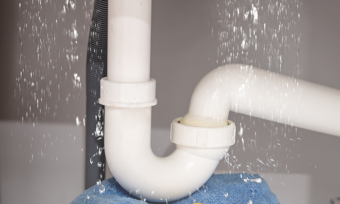Why is asbestos dangerous?
Asbestos is a strong and heat-resistant material that was once used in buildings and products. But, breathing in tiny asbestos fibers can seriously harm your lungs and even cause cancer. That’s why it’s important to be cautious around old buildings or products that might contain asbestos to stay safe and healthy.
Is asbestos legal in NZ?
Due to its health risks, the use of asbestos has been limited or banned in many countries, though it may still be present in older structures.
Here, the government banned the import of asbestos products in 1984, and by the late ’80s its use had been phased out. However, if there were asbestos products already in the country around that, it could still be used. That’s why you might still find asbestos in homes and buildings constructed into the 1990s.
Do I have asbestos in my home?
Identifying asbestos in your home can be difficult since the fibers are microscopic and often mixed with other materials.
Here are some indicators of asbestos being present in your home:
- Age of the building: if your house was built before the late 1980s, there’s a higher likelihood of asbestos-containing materials (ACMs) being used
- Common asbestos-containing materials: asbestos was frequently used in insulation, vinyl flooring, textured ceilings, roofing materials, and certain types of plaster. If your home has these materials there may be a higher risk of asbestos being present
How to check for asbestos
If you suspect asbestos is present in your home, the only way to definitively confirm its presence is through laboratory analysis of samples taken by professionals.
However, there may be a couple of steps you are able to take first:
- Check building records, renovation permits, or construction documentation to see if asbestos was used in your home. Architects or builders may have information on the materials used
- You can purchase asbestos testing kits, but it’s important to follow the instructions carefully. However, these kits may not be as accurate as professional inspections
Compare home and contents insurance with Canstar
Do I need to remove asbestos from my home?
You don’t need to remove asbestos. If materials containing asbestos are in good condition (i.e. undamaged, undisturbed), the safest option is to leave them alone. The materials are not dangerous if undisturbed and sealed.
How to remove asbestos
If you suspect asbestos, it’s crucial not to disturb the materials, as this can release harmful fibers. Consult with experts for proper assessment and, if necessary, safe removal.
Homeowners can conduct minor repairs on asbestos cement materials, provided they follow the recommended safety measures for such activities. It is important to avoid using power tools like saws, drills, sanders, and angle grinders, as well as high-pressure water blasters on asbestos materials. If the asbestos product is loosely bound or easily crumbles when pressed by hand (known as friable asbestos), it is essential to engage a licensed removalist for any removal work
Compare home loan rates for free with Canstar!
About the author of this page
This report was written by Canstar Content Producer, Caitlin Bingham. Caitlin is an experienced writer whose passion for creativity led her to study communication and journalism. She began her career freelancing as a content writer, before joining the Canstar team.
Enjoy reading this article?
You can like us on Facebook and get social, or sign up to receive more news like this straight to your inbox.
By subscribing you agree to the Canstar Privacy Policy




Share this article